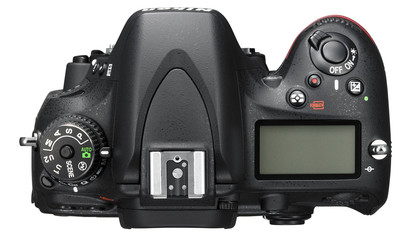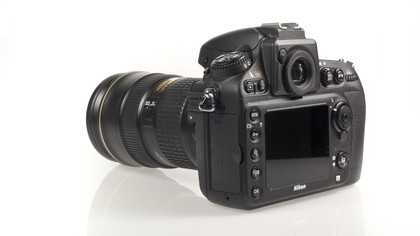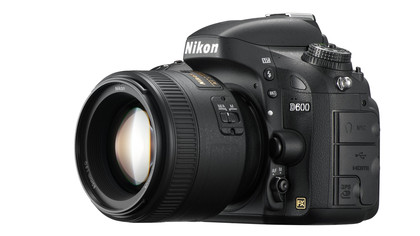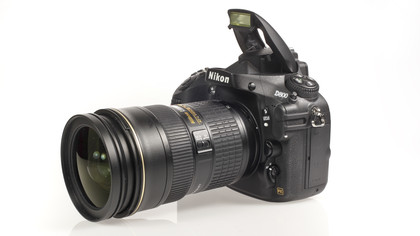Nikon D800 vs Nikon D600
Which full-frame Nikon should you buy?

This year has been a very exciting year for those lusting after a full-frame DSLR, with several new cameras either being announced or becoming available in 2012.
Nikon has introduced two full-frame cameras, the first being the 36 million pixel Nikon D800, which was revealed in the early part of the year.
More recently, the company unveiled the Nikon D600, which at the time of launch was claimed to be the world's smallest and lightest full-frame DSLR.
Featuring 12 fewer megapixels than its older sibling, the Nikon D600 has significantly lower recommended retail price. So, the question on many people's minds will be which camera to invest in. Here we take a look at the key differences between the two to help you make that decision.
Nikon D800 vs Nikon D600: sensor

While both are full frame CMOS sensors, only the Nikon D800 offers a whopping 36 million pixels. It's important to remember that more pixels isn't necessarily a good thing, however.
More pixels increases the chance of noise, and our lab tests show that the Nikon D600 is actually a better performer in terms of signal to noise ratio and dynamic range.
At the lowest sensitivity settings those extra pixels really come in handy, though, if you're looking to crop into the image and still retain quality. Or if you're shooting landscape or studio shots where low light isn't generally an issue.
Get daily insight, inspiration and deals in your inbox
Sign up for breaking news, reviews, opinion, top tech deals, and more.
Nikon D800 vs Nikon D600: autofocus

Both the Nikon D800 and the Nikon D600 use phase detection autofocusing when images are composed in the viewfinder, but the D800 offers an extra 12 autofocus points. Because on both cameras these autofocus points are all clustered towards the centre of the frame, it's likely that the average user won't feel disappointed by fewer points.
Nikon D600 vs Nikon D800: memory
Dual memory card slots is something we're used to seeing in high-end DSLRs. Whereas the Nikon D800 uses one CF card slot and one SD card slot, the Nikon D600 features dual SD slots.
Although CF cards generally perform better than SD cards, it's likely that those upgrading to a Nikon D600 from DX (APS-C) format cameras in Nikon's line will already have a stash of SD cards ready to go.
Nikon D600 vs Nikon D800: Wi-Fi connectivity

Unlike the Canon EOS 6D, neither the Nikon D800 nor Nikon D600 have inbuilt Wi-Fi connectivity. However, this is one area where the D600 trumps the D800, since it is compatible with the low-cost Wu-1b Wi-Fi transmitter that can pair the camera with a smartphone for internet access and remote control.
Nikon D600 vs Nikon D800: construction
As you might expect from the more expensive model, the Nikon D800 has a more premium construction, having an all-metal body. The Nikon D600, meanwhile, uses a magnesium alloy for the top and back panel, with plastic elsewhere. Both the cameras will be fairly rugged, but the D800 is likely to be just that little bit better protected.
Nikon D600 vs Nikon D800: weight
Both the latest full-frame offerings from Canon and Nikon claim to be the world's lightest DSLRs. The Nikon D600 does indeed weigh significantly less than the Nikon D800, at just 760g (850g with battery and memory card), compared with 900g (1kg with battery and memory card). It may not sound like a huge difference, but if you're looking for a relatively light camera that still offers high quality images, the D600 would probably be the best option.
Nikon D600 vs D800: verdict

Choosing between these two cameras can be a little tricky, especially since the now established Nikon D800 has been around for a while and the price difference isn't too marked. However, as the Nikon D600 settles into the market and the price drops, it will be a much more significant difference.
In some respects, probably due to the lower resolution, the D600 performs better in our lab tests, so it may come down to what you wish to shoot with your camera. It's also worth bearing in mind that you need to tighten up your shooting technique - use a tripod and mirror lock-up for example - to get the benefit from the D800's extra resolution.
If you're looking for a general camera for shooting a wide variety of subjects, and are looking to save a little money, the D600 is probably the more sensible choice.
However, if you're looking to step into the professional arena, have a particular hankering for that high resolution or need a slightly more rugged camera, the D800 wins out.
Amy has been writing about cameras, photography and associated tech since 2009. Amy was once part of the photography testing team for Future Publishing working across TechRadar, Digital Camera, PhotoPlus, N Photo and Photography Week. For her photography, she has won awards and has been exhibited. She often partakes in unusual projects - including one intense year where she used a different camera every single day. Amy is currently the Features Editor at Amateur Photographer magazine, and in her increasingly little spare time works across a number of high-profile publications including Wired, Stuff, Digital Camera World, Expert Reviews, and just a little off-tangent, PetsRadar.
